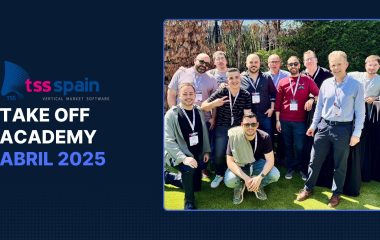Are you a little lost with all the technical jargon for your contact center?
Don’t miss this glossary: our industry has many acronyms and we thought you could use some clarification.
Omnichannel contact center software
It is the main tool that allows your contact center to function productively, providing all the necessary features to manage incoming and outgoing contacts, as well as the performance of your agents. Whether you have your contact center software hosted locally or in the cloud, its main functions include contact distribution and routing, call recording, quality measurement, analytics and script design.
Nowadays it is essential that the software is omnichannel, that is, that you can manage all your communication channels from the same platform. This allows you to keep a history of interactions for each customer or potential customer, regardless of the channel in which the communication was initiated.

ACD: Automated Call Distribution
It is the system that handles incoming calls and routes them to the next available agent based on criteria and skills you have decided on. For example, if the customer has chosen an option in your interactive menu to sign up for a service, the ACD functionality will take them to a specialized sales agent. You can apply several skills to the same agent and define priorities so that the call is answered according to criteria such as call overflow.
CTI: Computer Telephony Integration
This feature allows your computers to interact with your telephone system. The CTI can do many things, the main ones are these:
- Identify the caller based on the call data and the information you have in your CRM, for example, phone number
- Dial a number automatically
- Answer calls, put them on hold or transfer them to another agent, etc.
- Record calls in your CRM
- Control waiting calls, missed calls, etc.
ACW: After Call Work
These are the tasks executed by your agents when they finish a contact. Of course they will leave notes in the client’s file, but there may be other things to do such as sending a request to another department. ACW is just as important as time spent on the call, and needs to be considered when planning resources to ensure there are enough agents to handle the contacts.
After Call Work is just as important as the time spent on the call
PBX: Private Branch Exchange
It is the tool that connects your internal telephone system to the public telephone network. More than anything, it allows your customers to contact you using a single phone number while your agents answer from multiple extensions. The PBX system also provides call forwarding, recording, answering machine and interactive voice server. At ICR Evolution we can integrate our contact center software with your PBX, but if you don’t have one, we recommend Asterisk, which is free and easy to implement.
IVR: Interactive Voice Response
It is the automated server that allows your callers to navigate to the agent who is best positioned to help them with their request. At first, it was a simple menu where the caller hit the button with their phone to choose the option that best suited them. It was then converted into an automated self-service functionality to reduce calls. More recently, natural language processing and speech recognition have been incorporated to improve user satisfaction and reduce the time they spend clicking buttons before reaching a human. Lately, real-time contact channels and chatbots are starting to overtake interactive voice servers.
Predictive dialer
If your company runs outbound calling campaigns, a predictive dialer will save you a lot of time if you use it wisely. It is an automated system that dials a list of telephone numbers, identifying those that do not answer, those who have an answering machine, busy calls, etc. so that your agents only receive calls ready to be answered. Dialing multiple numbers at the same time and using metrics from previous calls to predict when the next agent will be available reduces the time agents are waiting for a useful call and also ensures that customers receiving calls have a agent ready when they answer. Our predictive dialer is easy and efficient to use, supporting maximum productivity for your agents.
Our software EVOLUTION incluides 4 dialing modes: predictive, progressive, with preview and agentless.

Intelligent Contact Routing
This feature is included in our ICR Evolution contact center software. Assign the contact to the best possible agent based on the criteria you have defined, for example, the reason for contact, the type of contact (VIP, channel, etc.), the value of the contact, the wait time for an agent and more. The system looks for the next most suitable representative with the necessary skills to handle the contact and directs the contact to them.
Omnichannel and multichannel
A brand usually communicates with its customers through various contact channels such as tphone, email, social media, instant messaging, chat or face to face in the store. The availability of multiple contact channels is defined as a multi-channel approach. Until recently, these channels often did not interact with each other to provide a seamless customer experience, leaving the customer to explain their request multiple times.
In recent years there has already been a shift to the omnichannel approach, which we particularly value at ICR Evolution, and which brings together all interactions from the different channels in a single solution to have a complete view of the customer, and provide a superior experience.
In addition to technology, the omnichannel strategy considers that the strategy is aligned across all channels, respecting the brand image, tone and communication objectives. It doesn’t matter which channel a customer has started the conversation on: if they speak first via chat and then send an email, thanks to omnichannel we know that it is the same person, what status their case is in and what steps to follow.
WebRTC: Web Real-Time Communication
It is a free technology that allows your customers to engage with your brand directly through modern channels such as click-to-call, video conferencing and chatbots, always maintaining a fluid omnichannel experience. WebRTC is a key component of an omnichannel contact center strategy and promotes unified communications that improve the customer experience.
Are you looking for tips to measure your contact center performance? Download our KPI Engagement ebook here.

And if you need a personalized consultation for your contact center technology needs, we will be happy to assist you. Do not hesitate to contact us.






